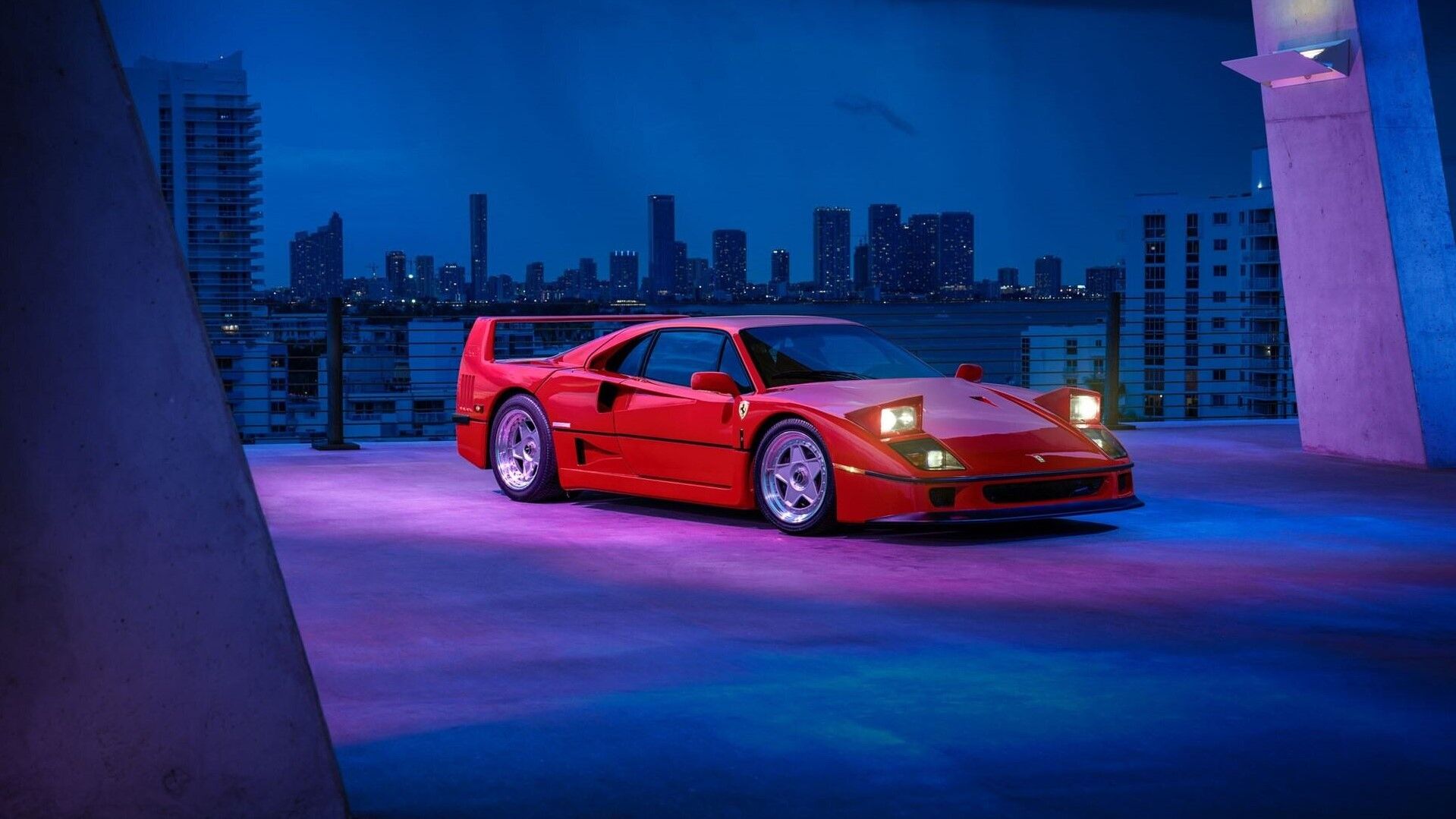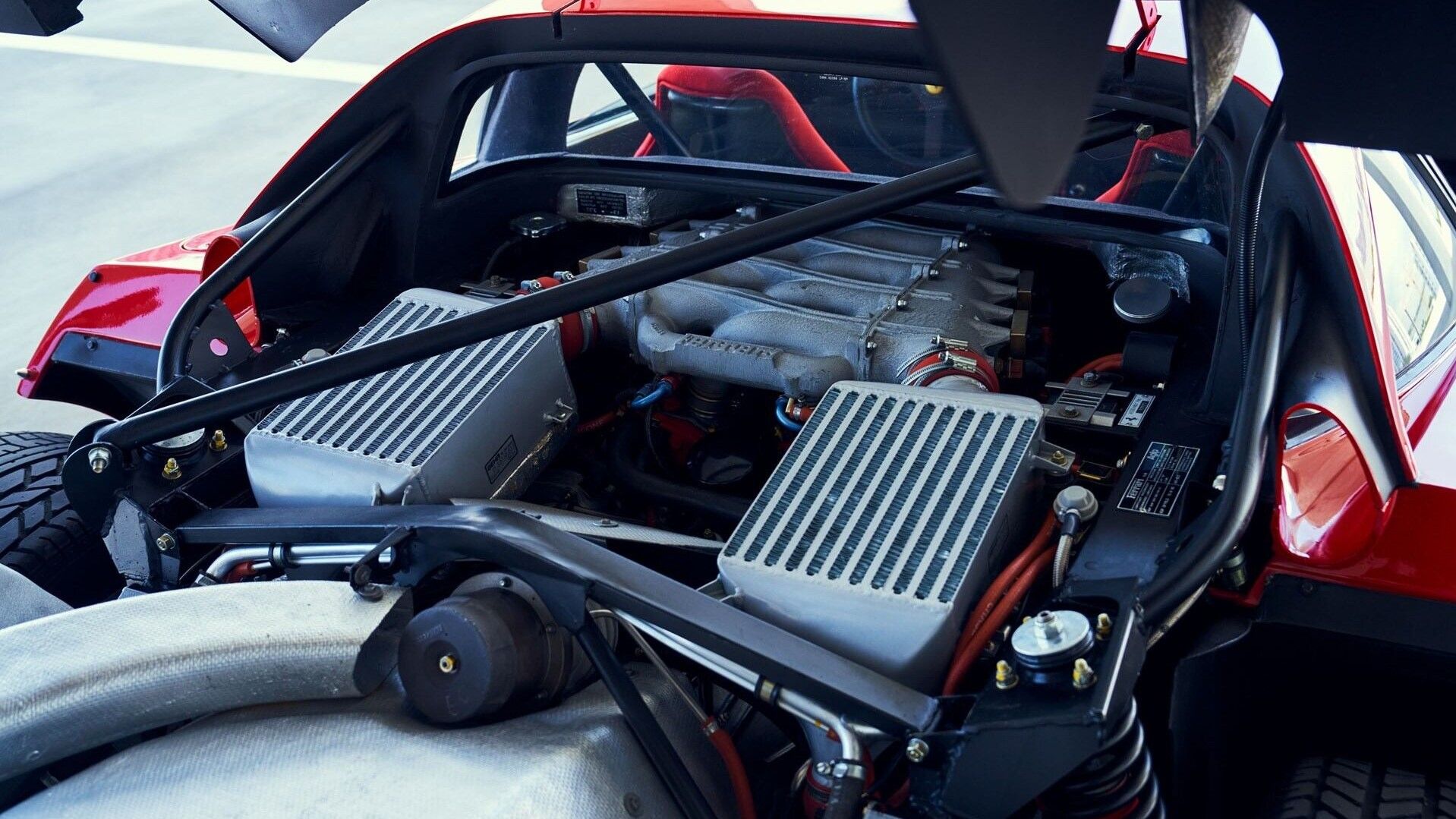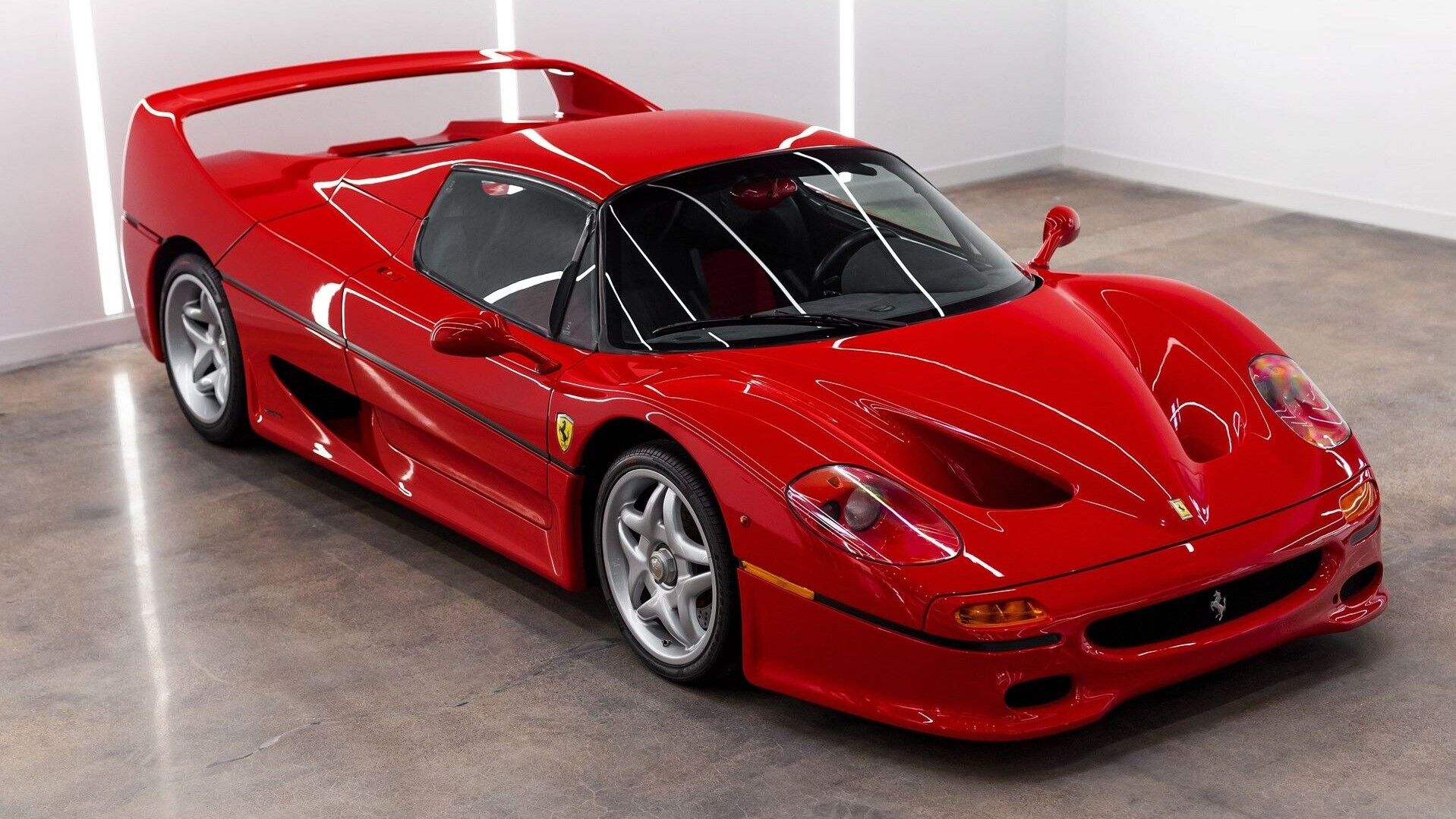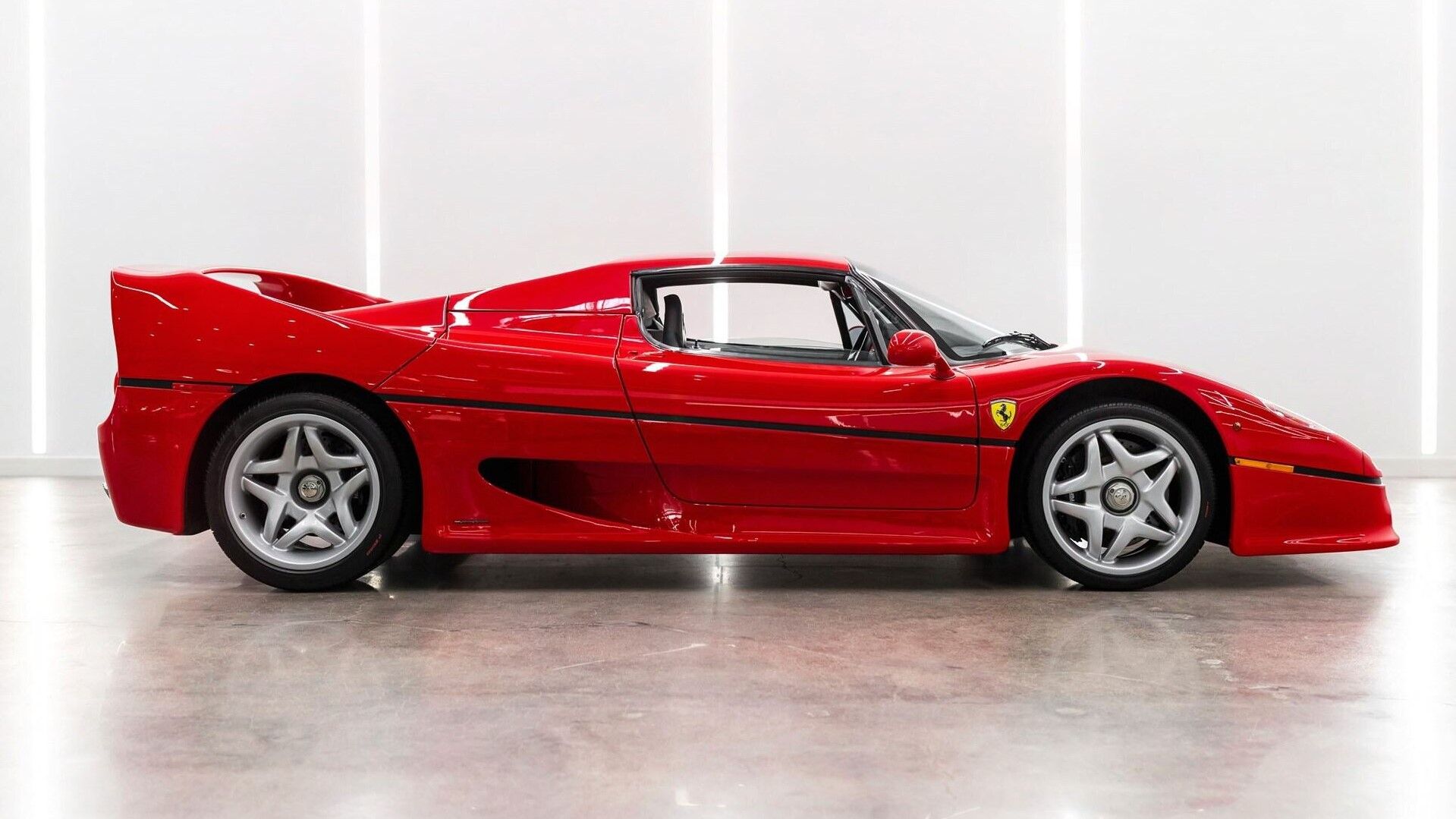The Ferrari F40 and F50 may have similar names, but they were developed for different purposes under different leadership and with different philosophies behind every nut and bolt. One was developed to whoop the Porsche 959 and break the 200 miles per hour barrier while being as simple and light as possible, while the other was supposed to be as close to driving a Formula 1 car without signing with Ferrari Scuderia itself. However, the F40 has been hailed as one of, if not the best supercar ever, and the F50 was hailed as the prancing horse's flopped attempt at a follow-up. However, both models are now preposterously expensive, and there is one of each up for sale at RM Sotheby's.
The F40 Was The Pinnacle Of Performance
A significant part of the reason the F40 is such a big deal is that it was the last car to be built under the careful eye of Enzo Ferrari. Another part of the reason is that this is the first production road car to breach the 200-mile-per-hour barrier, barely, with a top speed of 201 mph. As with most limited-edition Ferraris, the engine was a masterpiece. Based on the mill that was originally in the 288, the F40's powerplant was enlarged to 2.9-liters with IHI turbochargers and Behr intercoolers and was married to a five-speed manual gearbox with a dogleg gated shifter. The engine is capable of 478 horsepower and 425 pounds-feet of torque, which allowed the F40 to hustle from 0-60 in 3.8 seconds. Weight was a massive priority on the F40 as well - the chassis was a race-inspired steel tube frame, and pretty much everything else is carbon fiber or plastic. Other aspects of the car that benefit handling are four-wheel double-wishbone independent suspension, coil-over Koni shock absorbers, and four-caliper ventilated disc brakes. Adding to weight saving measures, it came without floor mats and sported cloth upholstery on plastic-composite racing seats, pull-strap door releases, drilled pedals, and Perspex windows.
Aesthetically, the F40 has always looked a bit goofy with the headlights in the "up" position, but the supercar is otherwise still striking with an over-arching curve that covers the entire body. Hard lines and angles dot the F40, and the glorious rear wing spans the entire width of the car.
The F50 Was Ripe With F1 Technology Of The Time
The F50 had a similar approach to motoring as the Mercedes AMG One - provide an F1-derived experience for the street. The engine started life as a screaming, howling beauty in the form of a naturally aspirated 3.5-liter V-12 in the 1990 Ferrari 641 Formula 1 car. Formula 1 engines liked being used on the road as much as modern ones do, so modifications were needed.
The V-12 was enlarged to 4.7-liters in an attempt to boost torque with a cast-iron block and detuned with a lower redline, not to mention the gearbox was an open-gate manual, whereas the F1 car debuted with flappy paddles in 1989. The final power output was 513 horsepower and 347 pound-feet of torque, meaning, there was little about the engine that was actually straight out of F1. Even so, that was enough to propel the prancing horse from a stop to 60 in just 3.6 seconds with a top speed hovering above 200 miles per hour. To reign in the speed, Ferrari mounted massive 14-inch Brembo brakes on the front wheels and 13.2-inch units on the rear.
The engine was bolted directly to the chassis, and the gearbox and suspension were bolted directly to the engine to make the whole package as stiff as possible. The interior featured LCD dashboard instruments, leather-trimmed seats, air conditioning, and adjustable ride height. Styling is subjective, but the F50 is extremely 1990s without a single straight line on the entire car, not to mention those wheels, along with inspiration from the F40 with the massive wing and taillight layout.
For enthusiasts with deep pockets, RM Sotheby's is offering the chance to own one or both of these iconic Ferraris at its Miami auction Dec. 10. The F40 is expected to hammer between $3 million to $3.5 million while the F50 is valued between $5.5 million to $6.5 million.




